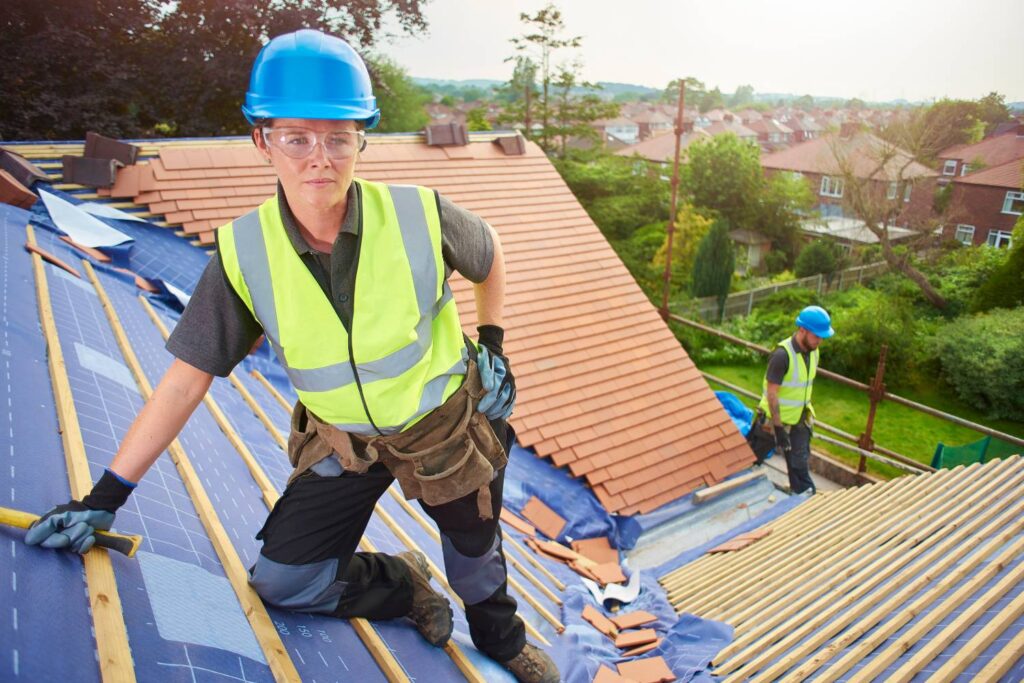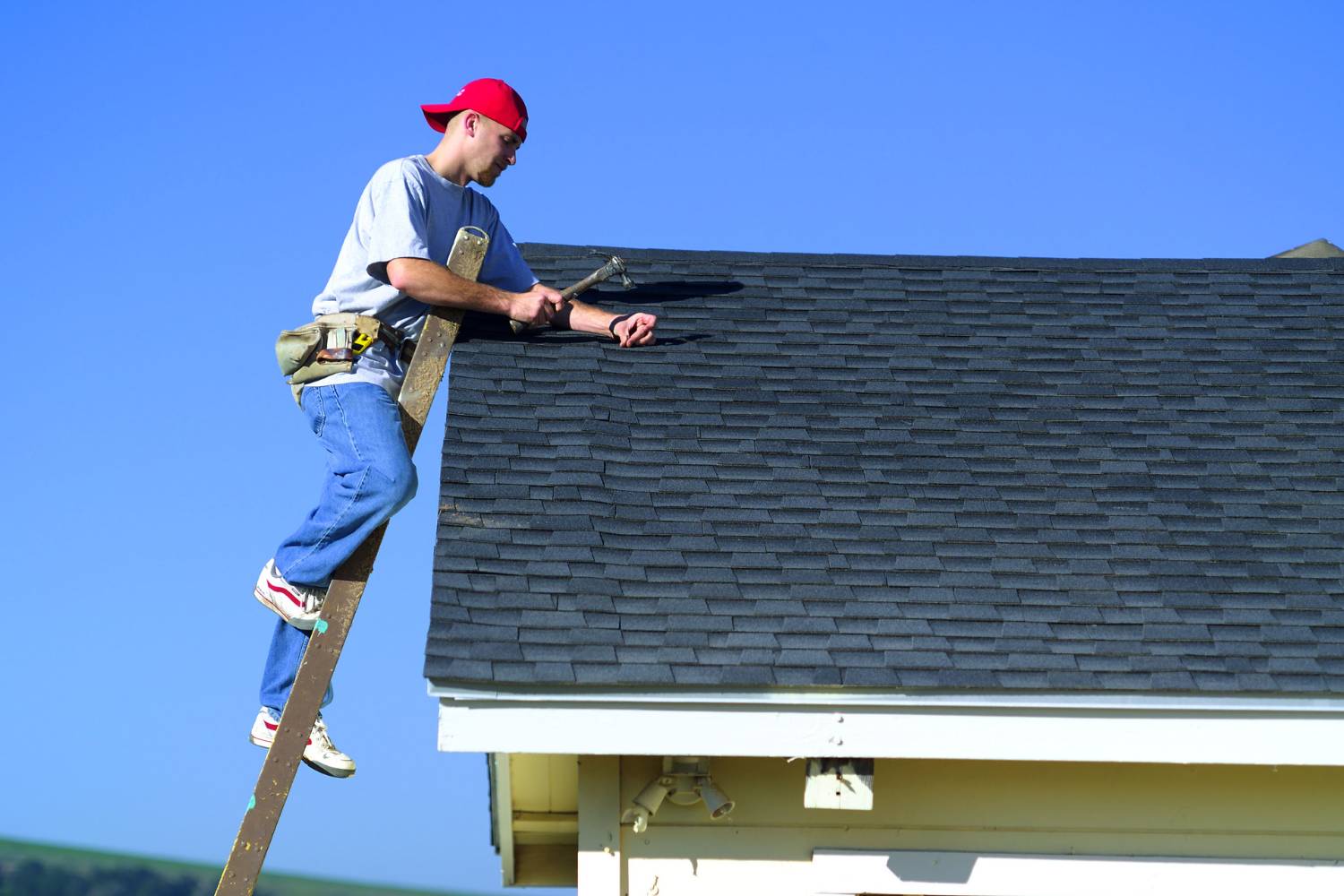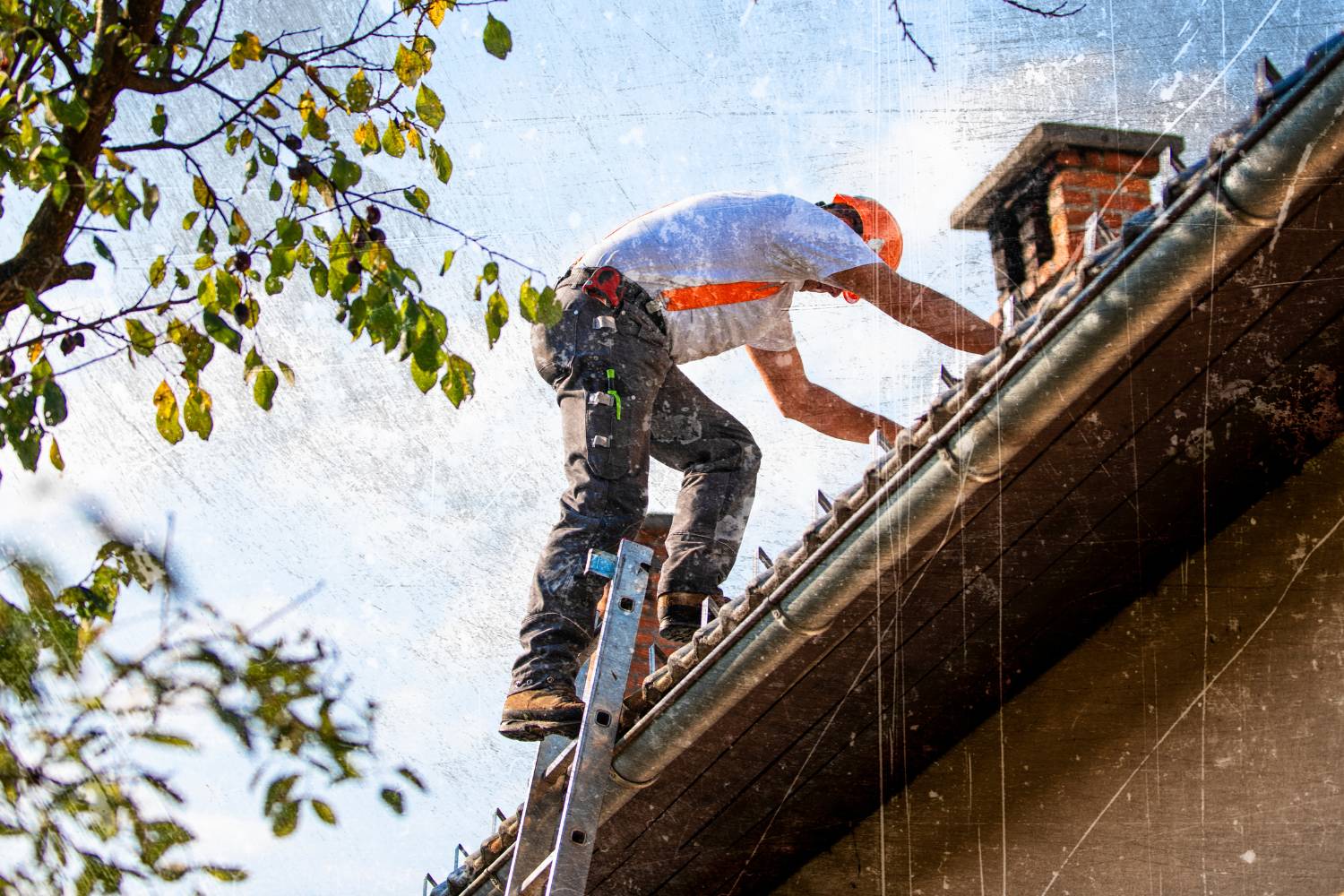Maintaining your home's roof is a crucial task that directly impacts its longevity, safety, and aesthetic appeal. One of the most significant considerations in this process is understanding the cost factors involved in roof restoration.
These factors can vary widely, influencing your budget and decision-making process. Here's an in-depth look at what drives the cost of roof restoration:
What Factors Influence The Cost Of Roof Restoration?
Roof restoration is an essential project to maintain the integrity and appearance of your home. Understanding the factors that influence the cost can help you budget and plan effectively. Here are the key elements that impact roof restoration costs:
Size Of The Roof
The larger the roof, the more materials and labour are required, leading to higher costs. Roofing companies typically charge per square metre, and smaller roofs might have a higher cost per square metre than larger ones. This means that while a large roof might seem expensive overall, the cost efficiency per unit area can be better than that of a smaller roof.
Pitch Or Steepness Of The Roof
The steepness of a roof plays a crucial role in determining restoration costs. Steeper roofs are more challenging and dangerous to work on, necessitating additional safety equipment and increasing labour costs. In contrast, flat or gently sloped roofs are easier to restore and thus cheaper. The complexity of the roof's design can also contribute to these challenges, further impacting the overall cost.
Roof Material
The type of material used for the roof significantly affects the cost. Different roofing materials come with varying costs, including asphalt shingles, metal, concrete tiles, and terracotta tiles. High-quality materials, while more expensive initially, offer better durability and longevity, potentially saving money in the long run. It's important to consider both the upfront costs and the long-term benefits when choosing roofing materials.
Personal Value And Upgrades
Homeowners may choose to upgrade roofing materials or extend roof structures during restoration, which can impact costs. Upgrades add value and can enhance the home's aesthetic appeal and functionality. While these improvements may increase the initial cost, they can provide long-term benefits and potentially increase the property's value.
Preventive Maintenance
Regular inspections and minor repairs are key to preventing significant issues and reducing overall restoration costs. Proactive maintenance helps maintain the roof's integrity and extends its lifespan, delaying the need for a full restoration. By addressing small problems early, homeowners can avoid more extensive and costly repairs down the line, making preventive maintenance a worthwhile investment.
Complexity Of Roof Design
The complexity of the roof's design is another critical factor in determining restoration costs. Roofs with multiple slopes, valleys, or intricate features require more expertise and time, raising the cost. Simple designs are less expensive to restore because they are easier and quicker to work on. Homeowners should consider the design complexity when planning for roof restoration.
Are There Financing Options For Roof Restoration?
Roof restoration is an essential aspect of home maintenance, but it can be a significant financial undertaking. Fortunately, there are several financing options available to homeowners to help manage the costs. Here’s a comprehensive look at the various methods you can consider for financing your roof restoration.
Home Equity Loans
- Definition: Home equity loans allow homeowners to borrow against the value of their home.
- Advantages: Typically offers lower interest rates compared to other loan types; can provide substantial loan amounts and long repayment terms.
- Considerations: Your home is used as collateral, meaning failure to repay can lead to foreclosure. Suitable for those with considerable home equity and a good credit score.
Second Mortgage
- Definition: A second mortgage involves borrowing additional money by extending the terms of your existing mortgage.
- Advantages: Can be a cost-effective way to finance large home improvement projects.
- Considerations: Requires thorough comparison of interest rates and terms. The overall cost can vary significantly.
Personal Loans
- Definition: Unsecured loans provided by banks or financial institutions based on creditworthiness.
- Advantages: No need for collateral; quicker funding process.
- Considerations: Higher interest rates compared to home equity loans; loan terms can vary widely, so it’s essential to shop around.
Credit Cards
- Usage: Ideal for smaller roof repairs or immediate funding needs.
- Advantages: Quick access to funds; potential rewards and incentives.
- Considerations: High-interest rates can accrue if the balance is not paid off quickly. Processing fees may also apply, which can be passed on by the roofer.
Roofing Company Financing
- Definition: Some roofing companies offer financing options directly or through partnered lenders.
- Advantages: Simplifies the financing process; can offer competitive rates and promotional terms.
- Considerations: Ensure you understand the terms and conditions. It’s essential to vet the roofing company’s reputation and financial stability.
Insurance Coverage
- Usage: If your roof has been damaged due to a covered event, like a storm, insurance may cover repair or replacement costs.
- Considerations: Claims for wear and tear or older roofs are typically denied. It’s crucial to check the specifics of your policy and work closely with your insurance agent.
Is It More Expensive To Restore Or Replace A Roof?
Maintaining a sturdy roof is crucial for protecting your home and its contents. Homeowners often face the dilemma of choosing between roof restoration and replacement. This decision significantly impacts not only the immediate safety and appearance of the home but also long-term financial aspects. Here, we explore the cost-effectiveness of both options and their drawbacks.
Comparing Costs
The cost-effectiveness of roof restoration versus replacement depends on several factors, including the age and condition of the current roof, the extent of damage, and the roofing material. Restoration is typically less expensive in the short term and can extend the life of the roof without the hefty price tag of a full replacement. This is particularly cost-effective for metal roofs, where issues such as corrosion can be directly addressed.
However, for roofs that have sustained extensive damage or are nearing the end of their service life, replacement might be the more financially prudent option over the long term. While the initial costs are higher, a new roof offers improved energy efficiency, better protection against the elements, and increased property value, which can offset the upfront investment over time.
Making The Right Choice
Choosing between roof restoration and replacement requires careful consideration. A professional assessment of the roof’s condition is crucial. Experienced roofing contractors can provide accurate estimates and insights into which option makes more sense for a specific situation.
Additionally, checking for any applicable warranties from the roofing manufacturer can help reduce costs, whether for restoration or replacement. The type of roof also influences the decision. For instance, asphalt shingle roofs may need to be replaced more often due to their shorter lifespan compared to tile or metal roofs. Conversely, a tile or metal roof might only need restoration even if it is several decades old.
What Are The Hidden Costs In Roof Restoration Projects?
Roof restoration projects often come with unexpected expenses that can significantly impact the overall budget. Understanding these hidden costs can help homeowners and property managers plan more effectively and avoid unpleasant surprises. Here are some common hidden costs in roof restoration projects:
Inspection And Assessment Costs
Before starting a roof restoration project, a comprehensive inspection is necessary to identify underlying issues. This often involves hiring a professional to conduct a detailed assessment, which incurs additional costs. If the inspection reveals structural problems, further assessments by structural engineers may be required, adding to the cost. These assessments are crucial to ensure the safety and stability of the roof but can significantly increase the initial budget.
Permits And Regulations
Many regions require permits for roof restoration work. The cost of obtaining these permits can vary depending on local regulations and the scope of the project. Additionally, ensuring that the restoration project complies with building codes and regulations may necessitate additional work or materials, increasing the overall cost. Navigating these regulatory requirements can be complex and time-consuming, often leading to unforeseen expenses.
Material Upgrades
Opting for higher-quality materials for better durability and aesthetics can significantly increase the cost of a roof restoration project. Homeowners may not realise the price difference until after project planning has begun. Certain roof types may require specialised materials that are more expensive and harder to source, further adding to the budget. Choosing the right materials is essential for long-term performance but can come with a premium price tag.
Labour Costs
Hiring experienced and skilled roofers often comes at a premium. Quality workmanship is essential for a successful restoration, but it can elevate the project's total cost. Additionally, unforeseen complications during the project can lead to longer working hours, further inflating labour costs. Ensuring that the workforce is adequately compensated for their expertise and time is necessary but can be a significant financial consideration.
Unforeseen Damages
Once the restoration begins, previously hidden damage such as rot, mould, or structural issues may be uncovered, necessitating additional repairs. These unexpected discoveries can derail the original budget and timeline.
Furthermore, adverse weather conditions can delay the project, leading to increased labour costs and extended rental fees for equipment and scaffolding. Preparing for these potential setbacks can help mitigate their financial impact.
How Can Homeowners Save Money On Roof Restoration?
Roof restoration is a crucial task for maintaining the integrity and safety of your home. However, it can be a costly endeavour. Fortunately, there are several strategies homeowners can employ to save money on roof restoration without compromising on quality. Here are some practical tips to help you manage the costs effectively.
Choose The Right Roofing Company
Selecting a reputable roofing company is the first step in saving money on your roof restoration. Ensure that the company you choose has trained installers and a track record of successful projects. Interview multiple companies and check for any consumer complaints through local business offices or the state attorney general’s website. A reliable roofing company will help you avoid unnecessary expenses by doing the job right the first time.
Invest In Quality Materials
While quality materials may be more expensive initially, they often save money in the long run. High-quality roofing materials have a longer lifespan and are less likely to require frequent repairs. Look for deals and discounts from manufacturers, and consider signing up for newsletters to stay informed about promotions.
Use Upgraded Underlayment For Moisture Protection
Upgrading the underlayment beneath your roofing materials can provide additional moisture protection. Synthetic underlayment, such as peel-and-stick types, acts as a secondary barrier against moisture, which can help lower your homeowner’s insurance premiums.
Consider Re-Covering Instead Of Full Replacement
In some cases, re-covering the existing roof might be a more cost-effective option than a full replacement. This involves placing new roofing materials over the existing roof. However, check local building codes and consult with a structural engineer to ensure your home can handle the additional weight.
Reuse Materials Where Possible
Not all roofing materials need to be replaced during restoration. Ask your contractor about the possibility of reusing existing materials. This can significantly reduce costs while still achieving the desired results.
Diy Where Feasible
Consider doing some of the simpler tasks yourself, such as reinstalling gutters or performing minor repairs. DIY efforts can save on labour costs, but ensure you have the necessary skills and tools to avoid causing further damage.
Modern Materials And Protective Coatings
Using modern, durable, and energy-efficient materials can extend the life of your roof and reduce long-term costs. Additionally, applying a protective paint or clear coat to your shingles can shield them from the elements and prolong their durability.
Conclusion
Understanding the factors that influence the cost of roof restoration is essential for any homeowner. From the size and pitch of your roof to the materials used and the complexity of the design, each element plays a crucial role in determining the overall expense. Additionally, considering financing options and being aware of potential hidden costs can help you manage your budget more effectively.
By choosing the right roofing company, investing in quality materials, and exploring cost-saving strategies, you can ensure your roof restoration project is both efficient and economical. Proper planning and informed decisions will not only enhance the longevity and safety of your home but also add significant value to your property.
Frequently Asked Questions
The most significant factors include the size of the roof, the pitch or steepness, the type of roofing material used, the complexity of the roof design, and the need for any upgrades or extensions. Each of these elements can vary widely in cost and collectively determine the overall expense of the project.
To save money on roof restoration, choose a reputable roofing company with a proven track record, invest in high-quality materials that offer long-term savings, consider re-covering instead of full replacement where feasible, reuse materials when possible, and tackle simple DIY tasks if you have the necessary skills.
Yes, several financing options are available, including home equity loans, second mortgages, personal loans, and credit cards. Some roofing companies also offer financing plans. Additionally, government loans and grants may be available for home improvements, and insurance coverage might apply if the roof damage is due to a covered event.
Hidden costs can include inspection and assessment fees, permit and regulatory costs, material upgrades, higher labour costs for experienced roofers, and unforeseen damages such as rot or structural issues uncovered during the project. Adverse weather conditions can also delay the project, leading to increased costs.
The cost-effectiveness of restoration versus replacement depends on factors such as the age and condition of the existing roof, the extent of the damage, and the type of roofing material. Restoration is usually less expensive in the short term and can extend the roof's life. However, if the roof is extensively damaged or nearing the end of its service life, replacement might be more financially prudent in the long run, offering better protection, improved energy efficiency, and increased property value.


